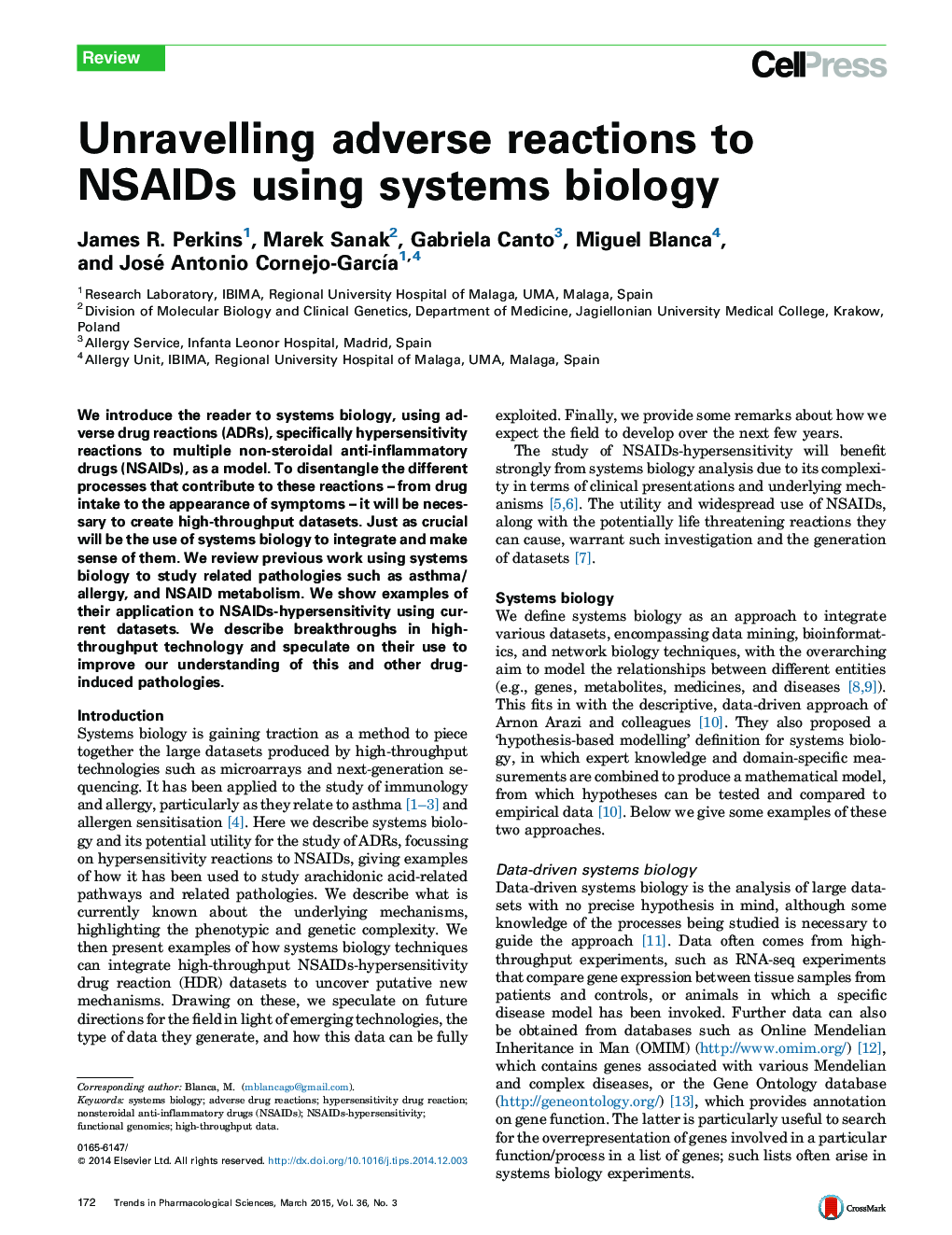| Article ID | Journal | Published Year | Pages | File Type |
|---|---|---|---|---|
| 2572467 | Trends in Pharmacological Sciences | 2015 | 9 Pages |
•The underlying mechanisms of adverse drug reactions (ADRs) are not fully understood.•Systems biology may help piece together genetic, transcriptomic, and epigenetic data.•Such methods can help find novel genes for further study and prioritise putative SNPs.•Examples include the use of gene networks and searches for SNPs that affect expression.
We introduce the reader to systems biology, using adverse drug reactions (ADRs), specifically hypersensitivity reactions to multiple non-steroidal anti-inflammatory drugs (NSAIDs), as a model. To disentangle the different processes that contribute to these reactions – from drug intake to the appearance of symptoms – it will be necessary to create high-throughput datasets. Just as crucial will be the use of systems biology to integrate and make sense of them. We review previous work using systems biology to study related pathologies such as asthma/allergy, and NSAID metabolism. We show examples of their application to NSAIDs-hypersensitivity using current datasets. We describe breakthroughs in high-throughput technology and speculate on their use to improve our understanding of this and other drug-induced pathologies.
